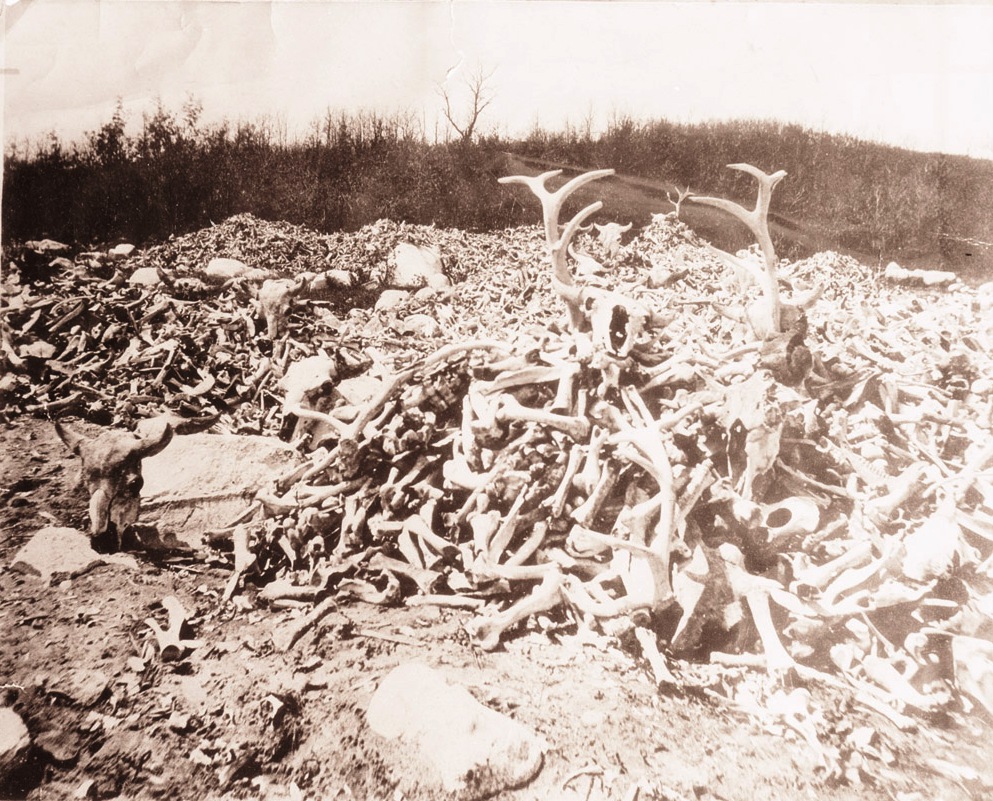The slaughter of the buffalo left the prairie marked by millions of tons of their bones, the skeletal remains of an entire species. Settlers wanting to augment their meager cash incomes sometimes collected and sold these bones, which were usually ground for use as fertilizer. Harry B. Harlan, born on a farm near Waverly, Nebraska, in 1874, recalled gathering buffalo bones with family members during the summer of 1880 in Furnas County:
“That first summer I remember going with Uncle Allen and his team and wagon with side-boards on, to gather a load of buffalo bones. In those days money was scarce, and a dollar looked as big as a wagon wheel to the settlers. A man was glad to work all day for a dollar. Some one in Arapahoe would buy the bleached bones to ship to some fertilizer plant perhaps. A big load of the bones would bring two or three dollars, perhaps more, so, if a man put in a day with his team gathering up a load, and another day to take it to town – it would be hard money, wouldn’t it?”
Harlan said the bones were plentiful, “usually scattered here and there, where the animal happened to fall, and sometimes two or more skeletons were in one place. There were many huge skulls with wide spreading short horns; bulls horns thick and stubby; cows horns more slender. I found lots of flint arrowheads nearby, or sticking in a bone when the buffalo had been killed by an Indian. We found some bones with a big lead bullet smashed into them. Some of the bullets were as big as the end of a man’s thumb, being from large bore ‘buffalo guns’ sometimes used by hunters.”
Harlan also remembered another artifact of the buffalo valuable to settlers: the buffalo robe. A buffalo hide, carefully tanned or softened and with the hair left on, “would be in nearly every farmers rig for a warm wrap in riding. Some carried a robe the year round as padding for the wagon seat. We had one of those buffalo robes, the inside leather soft and pliable, the outside long curly hair making it perfect protection for winter weather. The robes were plentiful then and comparatively inexpensive for millions of buffalo had been slaughtered a few years previously intirely [sic] for their hides.”
For information on another benefit to settlers bestowed by the buffalo, see “Buffalo and Cow Chips” on the Nebraska State Historical Society website. – Patricia C. Gaster, Assistant Editor / Publications





